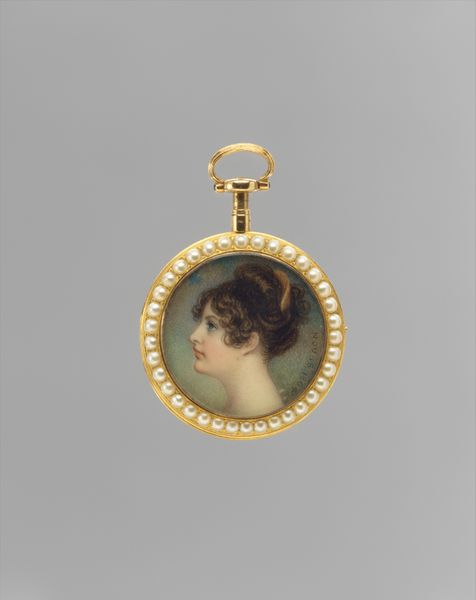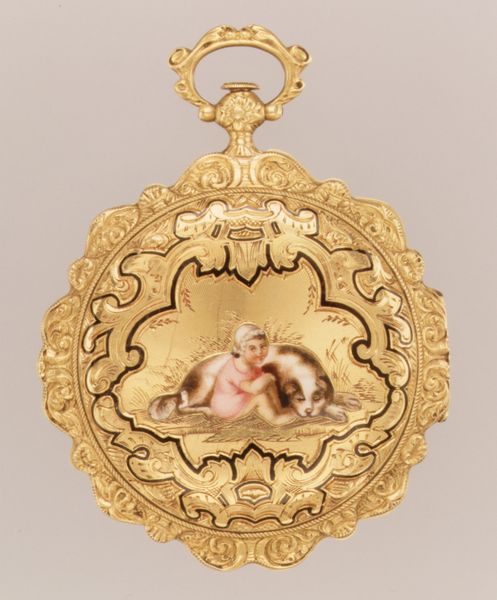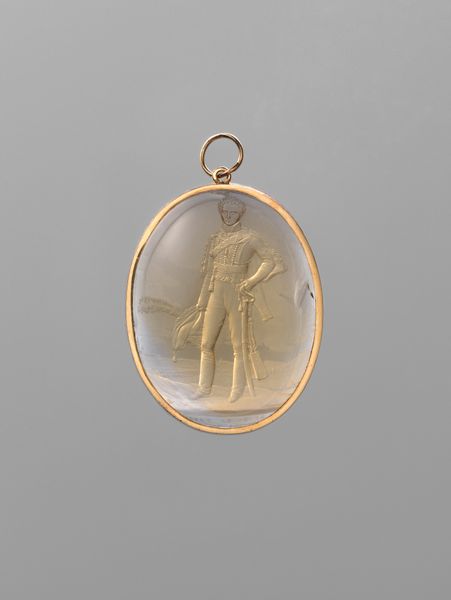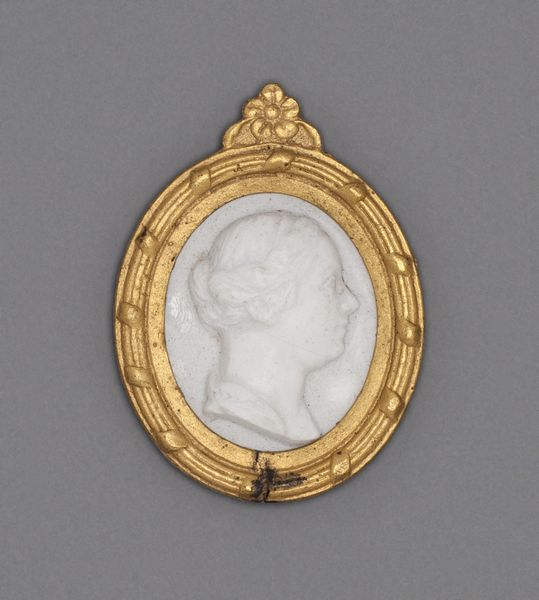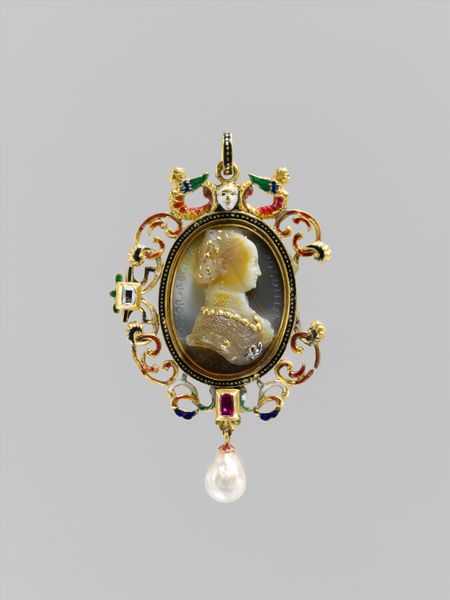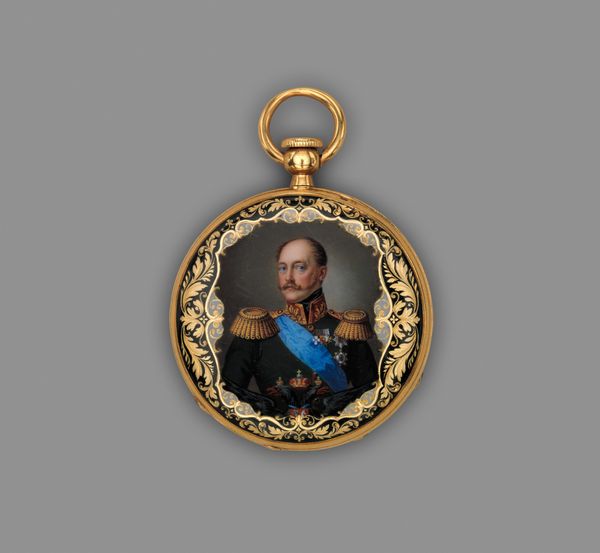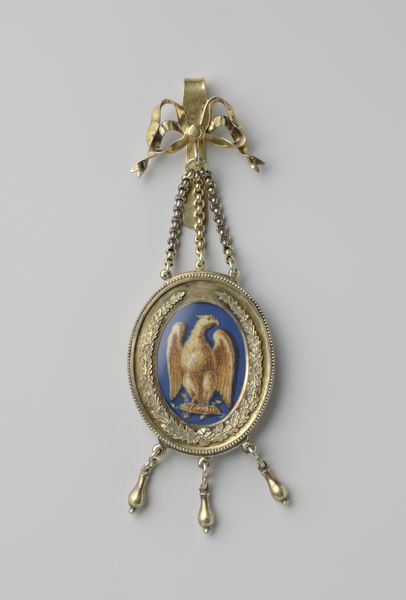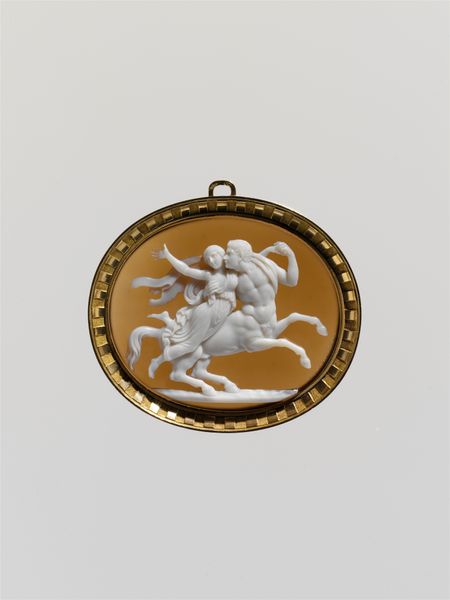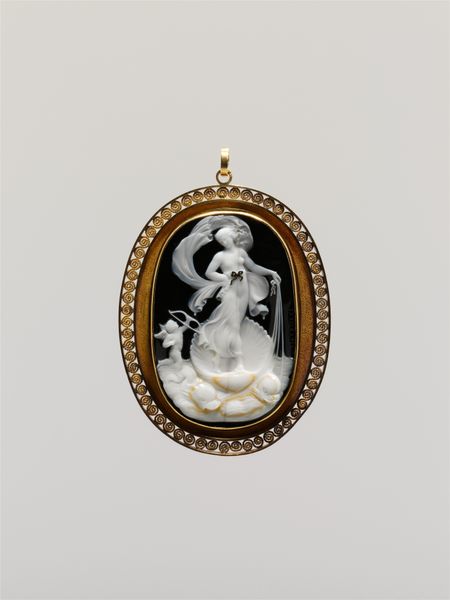
Dimensions: Overall (confirmed): 2 3/16 × 1 1/4 × 7/16 in. (5.5 × 3.1 × 1.1 cm)
Copyright: Public Domain
Editor: We’re looking at an Etruscan revival pendant, created between 1830 and 1899 by Eugène Fontenay. It combines painting and sculpture using gold and other metals to depict a miniature scene. The incredible detail for such a small object really strikes me. What catches your eye? Curator: I immediately consider the socio-political context of the 19th century, specifically the rise of nationalism and archaeological discoveries. This pendant reflects a fascination with classical antiquity and a desire to connect with a perceived "golden age." This piece makes me wonder how the growing museum culture influenced popular taste, stimulating this market for historicist jewelry? Editor: That's a great point! I hadn't thought about the museum angle. Curator: The so-called "Etruscan revival" speaks volumes about the public's hunger for art that offered narratives, moral lessons, or simply beauty rooted in historical legitimacy. How does the imagery influence your perception of its historical purpose? Editor: Well, it’s very neoclassical, a style referencing Greco-Roman imagery, a style promoted by state-funded academies and seen as a high cultural symbol. Its miniature scale transforms it into a portable status symbol. Almost like its wearer would demonstrate their high level of knowledge by owning the pendant. Curator: Exactly! Its wear communicates much about its patron's place within a stratified society. Did these "revivals" actually democratize art or just reify existing social hierarchies through aesthetics? Editor: I guess it did both things at once. I will have to consider these angles of cultural value when studying artworks. Curator: Precisely. Studying historical context is paramount.
Comments
No comments
Be the first to comment and join the conversation on the ultimate creative platform.
